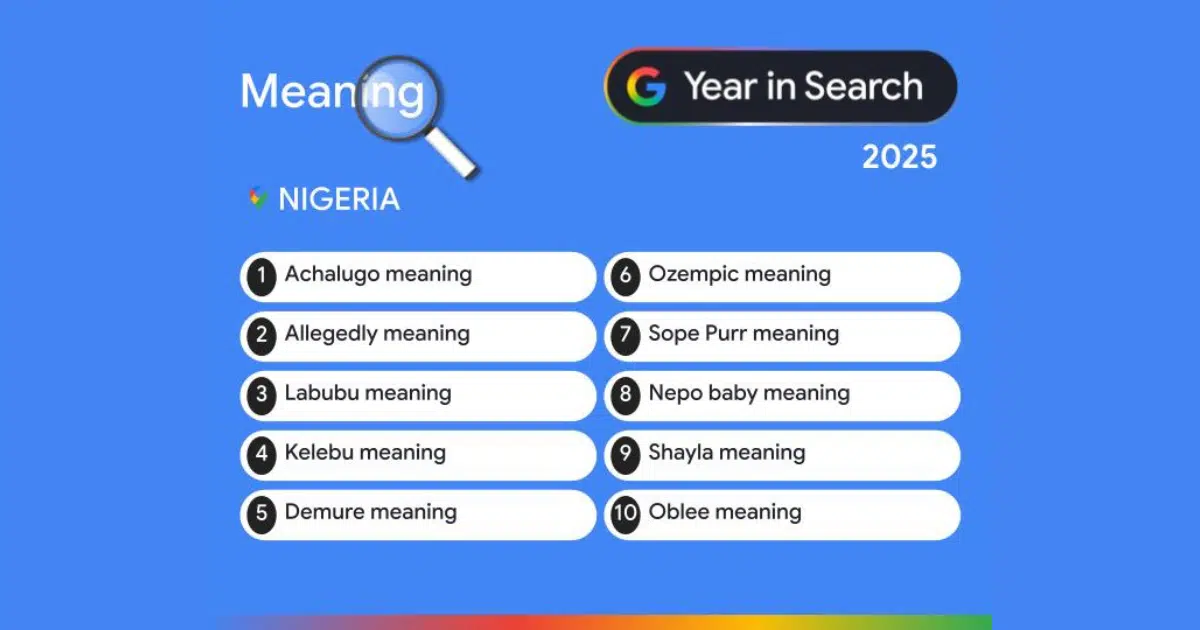Are you a founder or an entrepreneur facing the challenges of retaining key talent and ensuring long-term commitment in your company? A vesting schedule offers a practical solution.
Let’s say you and a friend start a startup and decide that ownership will only accrue as the business grows. However, if either of you leaves early, you will forfeit some shares to ensure fairness and commitment. This situation represents a vesting schedule.
Vesting schedules guarantee the gradual acquisition of ownership based on continuous contributions or time and safeguard the company in the event of an early departure by reclaiming shares. Simply put, a vesting schedule rewards employees who remain with the company longer while reducing benefits for those who leave early.
Key Takeaways
- An employer establishes a vesting schedule, which allows employees to gradually earn rights to specific benefits or assets.
- A vesting schedule ensures that ownership is earned gradually per continued contribution or time and protects the company if one co-founder leaves early by reclaiming shares.
- Accelerated vesting, vesting frequency, and termination clauses are common vesting schedule clauses.
- If a co-founder leaves a startup before their shares fully vest, the company buys back their unvested shares, often at or below fair market value.
- The vesting schedule’s importance includes talent retention, company protection, and risk management.
What is a vesting schedule?
An employer establishes a vesting schedule, which allows employees to gradually earn rights to specific benefits or assets. It allocates incentives, such as profits, equity, and stock options, to reward loyal employees who remain with the company for long.
Employees who leave before the vesting period may forfeit their full ownership rights to employer-provided assets. Exclusive ownership rights accrue depending on the length of an employee’s contract.
Vesting agreements also govern a company’s acquisition and outline the treatment of equity. These agreements include provisions for “acceleration,” which triggers the partial or complete vesting of shares upon specific events like a merger or acquisition. This ensures that employees or stakeholders can benefit from their equity more rapidly under defined circumstances.
Why Cofounders need a vesting schedule
Cofounders require vesting schedules to safeguard the startup’s equity structure, foster long-term dedication, and guarantee the acquisition of shares through significant contributions. Without a vesting schedule, a founder who leaves early could retain a large portion of equity, regardless of their contribution, which may lead to imbalance and investor concerns arising from early departures.
Importance of vesting schedule
Below are some of the benefits of the vesting schedule:
Retention
Vesting schedules allow employees to stay and work towards long-term goals. Employees must remain with the company for a certain period to fully realize the value of their stock options or equity grants.
It also ensures that founders earn their equity stake over time through continued contributions. The incentive motivates founders to work hard to build the company. Vesting aligns incentives by tying the founders’ share of rewards to their ongoing participation.
Protection for the company
Vesting protects the companies if a founder becomes uncooperative or negligent. Buying back unvested shares reduces the potential impact of disengaged founders who stop adding value, instead of keeping them with a large share. Additionally, it safeguards the company and other shareholders from the influence of inactive founders.
Risk management
Vesting manages risk for employees as their equity, or options, grows in value over time. It gives an incentive to work hard for the company’s growth and protect their investment.
Avoiding free riders
Vesting protects against founders who leave early with substantial equity despite minimal contributions. With a vesting schedule, they only get a part of the shares tied to their time served.
How vesting schedules work for founders
Grant date: This is when the individual receives the assets (like stock options).
Vesting commencement date: This is the starting point for the vesting schedule. The individual begins to accumulate ownership rights over time.
Vesting period: The vesting period is the duration over which the individual earns ownership. People often express it in terms of years, and a common structure involves a vesting period of four years.
Cliff period: This is a specific period that must elapse before an employee’s benefits become vested. Some vesting schedules include a “cliff” period at the beginning, during which no ownership is granted. At the end of the cliff period, a significant portion or all of the benefits may vest at once.
Vesting increments: Ownership usually vests gradually over time after the cliff period (if applicable). A common schedule involves vesting 25% after the first year, followed by an additional 6.25% each quarter until the fourth year, marking the achievement of 100% ownership.
Forfeiture: If the individual leaves the company or fails to meet certain conditions before the vesting is complete, they may forfeit all or part of the unvested benefits.
Types of vesting schedules
Milestone-based vesting
Milestone-based vesting is a type of vesting in which employees receive stock options and benefits upon reaching specific company performance milestones.
For instance, if you are an employee in a company’s sales and marketing unit, you may receive stock options after attaining a specific objective.
Time-based vesting
This type of vesting allows employees to earn their stock options over time, following a cliff or a set schedule. A cliff occurs when the vesting schedule grants the employee’s first option, followed by quarterly or monthly grants of the remaining options.
Hybrid Vesting
This is a combination of milestone-based and time-based vesting. It requires employees to remain with the company for a certain period and achieve a specific goal before they can exercise their stock options.
Which contracts typically contain a vesting schedule?
The following types of contracts typically contain vesting schedules:
- Employment agreements: These involve the use of equity in compensation.
- Stock option agreements: contracts detailing the terms for employee stock options.
- Founders’ agreements outline the distribution of equity among startup founders.
Vesting schedule clauses to consider
- Accelerated vesting: Accelerated vesting enables employees to access unvested stock options before their standard vesting schedule. Rather than wait for the usual four-year vesting period, this clause allows you to vest all remaining options immediately. It usually happens upon specific events, such as employment termination, acquisition, merger, or initial public offering (IPO).
- Vesting frequency: The vesting frequency is the interval at which shares vest in an equity compensation plan. Before investing in a vesting plan, it’s important to consider how often assets or stock options can be accessible to employees. For example, you can choose either a monthly or yearly schedule.
- Termination clause: A written section within a contract, known as a termination clause, outlines the circumstances under which the agreement can terminate. Termination clauses, found in vesting schedules, specify the circumstances under which an employee forfeits unvested benefits like stock options or retirement contributions upon leaving the company.
These clauses ensure companies retain control over unvested assets and protect themselves from granting benefits prematurely.
The management of a founder’s equity at a departing company is contingent upon their reason for leaving and the terms of the vesting agreement. For a “for cause” termination (e.g., misconduct or breach of contract), they usually forfeit any unvested equity, and the company may have the right to repurchase some or all vested shares at a predetermined price.
If, on the other hand, the founder is fired “without cause” (for example, by mutual agreement or restructuring), they keep the vested equity but lose the unvested shares, unless the agreement has special rules like accelerated vesting under certain conditions, like a change in company control or performance milestones.
Standard vesting schedules in startups
Typical vesting schedule for Cofounders
According to experts, the most common vesting schedule for founders is a four-year plan with a one-year cliff. Under this arrangement, founders stay with the company for at least one year before earning any shares. After the first year, they vest 25% of their shares, with the remaining 75% vesting gradually over the next three years, either monthly or quarterly. This schedule ensures founders are committed to the company’s long-term success and motivated to grow the business, creating value for investors.
Mudassir Mustafa, an angel investor, suggests that since some founders contribute more at the early stages, while others might have a more significant role in the later stages, a customized vesting schedule that reflects these differences is important This approach can help ensure that each founder’s equity stake accurately reflects their contribution to the company.
Alternatives to the standard schedule
Below are some alternative vesting options that fit specific startup needs:
Longer vesting period: This vesting period is over an extended interval, often between 4 to 10 years or more. Matthew Pauley, a Senior Lecturer of Entrepreneurship and Sustainability at Middlesex University, shares that a longer vesting period, such as four years, offers several advantages for both co-founders and startups. Below are some of his mentions.
Advantages
- It indicates the co-founders’ confidence, which can boost credibility and trustworthiness among investors, employees, and customers.
- It reduces the risk of co-founder disputes and dilution, as co-founders have to earn their equity gradually and cannot sell or transfer it without the consent of the other co-founders or the board.
- It encourages co-founders to focus on the startup’s long-term value creation and growth rather than short-term gains or exits.
Disadvantages
- It can restrict co-founders’ flexibility, making them feel trapped in an underperforming startup, which may lead to frustration, burnout, and reduced morale.
- It can discourage co-founders from opportunities better aligned with their skills and passions, limiting their growth.
- It can create a mismatch between the value and the compensation of co-founders, who may feel underpaid or undervalued for their work and contribution to the startup.
Shorter vesting period: This is a vesting period within a brief duration, usually 1 to 3 years.
Advantages
- If you are unsatisfied with your current startup, a shorter vesting period gives co-founders the flexibility to pursue other goals.
- It aligns equity with contributions, ensuring fair rewards for skills and impact.
- It encourages meritocracy and accountability, rewarding co-founders based on results and performance rather than tenure or loyalty.
Disadvantages
- It can weaken co-founders’ commitment, potentially leading to early departures and affecting the team and investor confidence.
- It raises risks of conflicts and dilution, as co-founders may clash over goals or exit prematurely.
- It may shift the co-founders’ focus from long-term vision to short-term gains.
Best practices for setting up a Cofounders vesting schedule
The best practices for setting up a Cofounders’ vesting schedule differ from those for employees because Cofounders already own shares, while employees can buy them at a set price. Since cofounders take on the most risk regarding money and time, they often benefit more from special terms and conditions that may apply to their vesting agreements.
If a co-founder leaves a startup before their shares fully vest, the company backs their unvested shares, often at or below fair market value. Additionally, the company often applies the right of first refusal to co-founders’ shares. This enables the other founders or investors to prevent a cofounder from selling their shares to a third party, thereby limiting the exit option to selling the shares back to the company or its founders.
Establishing fair and balanced Terms
Establishing fairness in equity distribution involves transparent discussions, clear expectations, and often legal agreements to prevent disputes. Ensuring trust, motivation, and long-term collaboration among cofounders is essential. An equity distribution guarantees the recognition and value of all founders’ contributions, skills, and sacrifices, thereby directly boosting their morale and commitment to the startup’s success.
Factors that enable fair equity distribution include contributions, risk tolerance, and future potential.
Customizing the Vesting Schedule Based on Roles
To ensure fairness, align incentives, and foster long-term commitment and collaboration, a founding team may adjust the schedule for different roles to reflect the varying levels of involvement, contributions, and risk taken by each co-founder.n.
Below are some instances that mandate customizing vesting schedules:
- Customizing a vesting schedule may be necessary when a cofounder works full-time while another works part-time.
- A co-founder contributing funding, intellectual property, or unique skills may have a modified vesting schedule to reflect their upfront value.
- It may also happen when a cofounder changes roles.
These aim to ensure fairness, encourage accountability, support startup goals, and reflect risk and sacrifice.
Getting legal advice
Consulting legal experts when drafting vesting agreements is important to ensure fairness, legal compliance, and the protection of all parties’ interests. Well-crafted agreements prevent misunderstandings and lay a solid foundation for the startup’s growth.
A legal expert can help you customize the vesting schedules, set the cliff periods and forfeiture clauses, outline tax implications, and properly exit scenarios. Involving legal experts early helps you concentrate on building your startup with confidence that equity agreements are fair.
Pros and Cons of Cofounders Vesting Schedules
Advantages of Vesting Schedules
- Vesting protects the companies if a founder becomes uncooperative or negligent. Buying back unvested shares reduces the potential impact of disengaged founders who stop adding value, instead of leaving them with a large share.
- A vesting schedule boosts investor confidence by ensuring founders and key team members stay committed long-term, earning equity over time and reducing the risks of early departures.
- A vesting schedule ensures fair equity distribution.
- A vesting schedule demonstrates your commitment to your employees’ long-term success and motivates them to stay.
- Knowing that they will receive rewards for their service encourages loyalty among employees.
Potential Drawbacks and Pitfalls to Avoid
- Harsh vesting terms may push top employees to leave or decline offers, so vesting contracts must be carefully designed.
- Setting up and managing vesting schedules takes time and effort, which can be costly if the schedules do not incentivize employees to stay.
- A longer vesting period can restrict co-founders’ flexibility, making them feel trapped when the startup is underperforming. This may lead to frustration, burnout, and reduced morale.
- A shorter vesting period can weaken co-founders’ commitment, potentially leading to early departures and affecting the team’s and investors’ confidence.
FAQs About Cofounders Vesting Schedules
How does a vesting schedule work for cofounders?
The vesting schedule gradually distributes co-founder equity over time, ensuring they earn ownership by remaining involved with the company. Typically, the company releases equity in increments, such as monthly or annually, following an initial “cliff” period where no equity vests.
If a cofounder leaves early, they forfeit unvested shares.
What is the standard vesting schedule for startups?
The most common vesting schedule for startups is a four-year plan with a one-year cliff. Founders must stay with the company for at least one year to earn any shares, at which point 25% of their equity vests. Over the next three years, the remaining 75% vests gradually, typically monthly or quarterly.
Can we modify vesting schedules?
Yes, the vesting schedule can be modified under specific circumstances, including the need to adhere to legal regulations, a significant change in the company’s direction, a change in a role or responsibilities, or in case of a merger or acquisition.
Amid this, its important to legally document any changes to maintain transparency. I suggest a written agreement that details the modifications, including the reasons for the changes and any impact on the original vesting schedule.
What is a Cliff Period in a Vesting Schedule?
A cliff period is a specific period that must elapse before an employee’s benefits become vested. The clause ensures that team members stay with a startup for a set initial period (typically one year) before earning any equity. It protects the startup from prematurely granting shares to individuals who leave early, ensuring commitment and reducing risk for cofounders and investors.
How Does Accelerated Vesting Work?
Accelerated vesting enables employees to access unvested stock options before their standard vesting schedule. It usually happens upon specific events, such as employment termination, acquisition, merger, or initial public offering (IPO).
Conclusion
Summary of Key Points
In summary, an employer establishes a vesting schedule as a timeline that enables employees to gradually acquire rights to specific benefits or assets. It guarantees the gradual acquisition of ownership through contributions or time, and safeguards the company in the event of an early departure by reclaiming shares.
The vesting schedule’s importance includes talent retention, company protection, and risk management. Common clauses include accelerated vesting, vesting frequency, and termination clauses.
If a cofounder leaves your startup before their shares fully vest, your startup can buy back unvested shares, often at or below fair market value. Furthermore, vesting agreement terms and conditions may benefit cofounders more because they take on the most financial and time risk.
In the meantime, co-founders’ shares frequently have the right of first refusal, which enables other founders or investors to prevent a co-founder from selling their shares to a third party, leaving only the option to sell the shares back to the company or its founders.
Before you opt for a vesting schedule, understand that it can be long-term or short-term, depending on your startup’s vision and what is fair.
Final Thoughts on Choosing a Vesting Schedule
While vesting schedules are essential, it is crucial to weigh the pros and cons of different vesting schedules and seek professional advice to implement a fair, legally sound schedule that aligns with your startup’s goals.
Ensure fairness, legal compliance, and the protection of all parties’ interests by consulting legal experts when drafting vesting agreements. A legal expert can help you customize a fair vesting schedule, considering tax implications and exit scenarios. This allows you to concentrate on building your startup.











